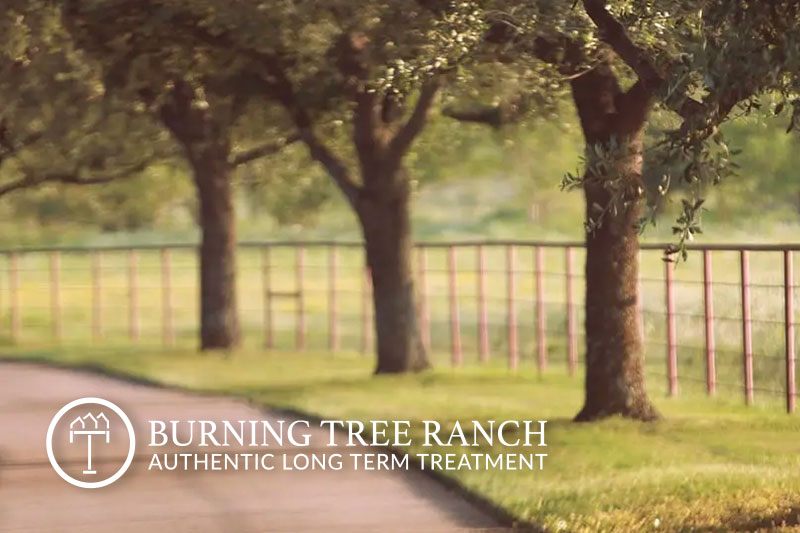Anorexia Nervosa & Substance Abuse in a Dual Diagnosis
Anorexia Nervosa is a disorder that far exceeds simple dietary preference. This disorder reflects deep psychological distress and carries grave physical risks, including malnutrition and organ damage. Early engagement with healthcare professionals is essential for devising a comprehensive treatment strategy, integrating nutritional rehabilitation and psychological support, to combat this life-threatening disorder and foster a journey towards sustainable recovery
Anorexia Nervosa: A DSM-5 Overview
Anorexia Nervosa, as outlined in the Diagnostic and Statistical Manual of Mental Disorders, Fifth Edition (DSM-5), is a significant and potentially life-threatening eating disorder characterized by severe restrictions on food intake, an intense fear of gaining weight, and a distorted body image. Individuals with Anorexia Nervosa often view themselves as overweight, even if they are underweight, leading to a relentless pursuit of thinness through extreme dieting, fasting, or excessive exercise.

Diagnostic Criteria for Anorexia Nervosa
The DSM-5 specifies the following criteria for diagnosing Anorexia Nervosa:
- Restriction of Energy Intake: Significant reduction in food intake leading to a body weight that is substantially lower than minimally normal for age, sex, developmental trajectory, and physical health.
- Intense Fear of Gaining Weight or Becoming Fat: Persistent behavior that interferes with weight gain, even at a significantly low weight.
- Disturbance in the Way One’s Body Weight or Shape is Experienced: Undue influence of body weight or shape on self-evaluation or denial of the seriousness of the current low body weight.
Anorexia Nervosa: Two Key Subtypes
Anorexia Nervosa is divided into two subtypes based on the presence or absence of binge eating and purging behavior
Restricting Type
Weight loss is achieved through dieting, fasting, or excessive exercise.
Binge Eating/Purging Type:
The individual engages in binge eating or purging behaviors, such as self-induced vomiting or the misuse of laxatives, diuretics, or enemas.
Common Features and Symptoms
- Physical Symptoms: These can include but are not limited to significant weight loss, menstrual irregularities or cessation, gastrointestinal complaints, dizziness, fatigue, and insomnia.
- Psychological Symptoms: Preoccupation with food, dieting, counting calories, and a distorted body image. There may also be a denial of the seriousness of the low body weight.
- Behavioral Signs: This can involve wearing baggy clothes to hide weight loss, avoiding meals or social situations involving food, and developing rigid eating or exercise routines.
Consequences: The Devastating Impact on Physical & Mental Health
Anorexia Nervosa can have devastating physical, psychological, and social consequences. Physically, it can lead to severe malnutrition, osteoporosis, anemia, cardiovascular problems, and kidney issues. Psychologically, it is associated with increased rates of anxiety, depression, and suicidal ideation. Socially, it can severely impact relationships and performance at school or work.
A Multifaceted Approach to Treatment
Treatment is often multifaceted, involving nutritional rehabilitation to restore weight, psychotherapy to address psychological aspects (such as distorted body image and fear of weight gain), and medical treatment for any co-occurring health issues. Family-based therapy (FBT) is considered adequate, especially for adolescents with Anorexia Nervosa, alongside individual therapies like Cognitive Behavioral Therapy (CBT).

Beyond Tossing and Turning: Uncovering the Truth about Anorexia
Anorexia Nervosa is often surrounded by misconceptions that can obscure understanding and support for those affected. Dispelling these myths with facts is crucial for fostering empathy and promoting accurate awareness:

MYTH 1: Anorexia Nervosa is a choice or a phase.
Truth: Anorexia Nervosa is a severe mental health disorder, not a lifestyle choice or a phase that individuals can simply “snap out of.” It involves complex biological, psychological, and sociocultural factors.

MYTH 2: Only teenage girls suffer from Anorexia Nervosa.
Truth: While Anorexia Nervosa is more prevalent among females, it can affect individuals of any gender, age, race, or socioeconomic status. Males, adults, and individuals from diverse backgrounds also suffer from this condition.

MYTH 3: Anorexia Nervosa is just about being overly concerned with appearance.
Truth: While concerns about appearance can play a role, Anorexia Nervosa is primarily characterized by an intense fear of gaining weight and a distorted body image. It often serves as a coping mechanism for deeper psychological issues.

MYTH 4: People with Anorexia Nervosa don’t eat anything.
Truth: Individuals with Anorexia Nervosa may severely restrict their food intake, but this doesn’t mean they don’t eat at all. Eating habits vary widely, including limited quantities of certain foods or specific eating rituals.

MYTH 5: Anorexia Nervosa is easy to identify by someone’s appearance.
Truth: While significant weight loss may be a visible sign of Anorexia Nervosa, not everyone with the disorder appears emaciated. Some individuals may maintain an average weight or be overweight, making the condition less visibly apparent.

MYTH 6: Recovery from Anorexia Nervosa simply involves eating more.
Truth: Recovery from Anorexia Nervosa is complex and involves much more than just “eating more.” Effective treatment requires a comprehensive approach, including psychological therapy, nutritional counseling, and sometimes medication, tailored to the individual’s needs.
By confronting these misconceptions with facts, we can improve understanding and support for those battling Anorexia Nervosa, highlighting the need for compassion, comprehensive treatment, and ongoing research into this challenging disorder.
From Starvation to Substance UseThe Hidden Struggle in Anorexia Nervosa
The prevalence of addiction among individuals with Anorexia Nervosa varies, with studies indicating that the co-occurrence of substance abuse and eating disorders is not uncommon. The relationship between Anorexia Nervosa and substance abuse is complex and influenced by various psychological, biological, and social factors. Here are some key facts and percentages related to addiction in the context of Anorexia Nervosa:
Statistics on Co-occurrence & Demographics
Co-occurrence Rates:
Research suggests that individuals with Anorexia Nervosa have a higher likelihood of substance abuse compared to the general population. Studies have found that approximately 27% to 50% of individuals with eating disorders, including Anorexia Nervosa, experience substance abuse at some point in their lives, a rate significantly higher than that seen in the general population.
Gender Differences:
While Anorexia Nervosa predominantly affects females, both genders with the condition show similar rates of substance abuse. However, the types of substances abused can vary between genders.
Commonly Abused Substances:
Alcohol
Alcohol is one of the most commonly abused substances among individuals with Anorexia Nervosa, often used to manage emotional distress or as part of social contexts that may be related to eating disorder behaviors.
Stimulants
Stimulants, including caffeine, amphetamines, and cocaine, are abused for their appetite-suppressing effects. Individuals with Anorexia Nervosa may use these substances to aid in weight loss or to increase energy levels despite malnutrition.
Laxatives and Diuretics
While not traditionally classified as addictive substances, the misuse of laxatives and diuretics is prevalent among individuals with Anorexia Nervosa as a method to control weight. This misuse can lead to dependency and significant health risks.
Nicotine
Smoking and the use of nicotine products are higher among those with Anorexia Nervosa compared to the general population, partly due to beliefs about nicotine's appetite-suppressing properties.
Identifying the Need: When to Seek Medical Advice for Anorexia Nervosa
Consulting a healthcare provider for Anorexia Nervosa is essential at the earliest signs of the disorder, as early intervention can significantly improve recovery outcomes. Here are indicators that it’s time to seek professional help:
Significant Weight Loss:
Losing much weight quickly or being significantly underweight for age and height.
Restrictive Eating Habits
Severely limiting food intake, avoiding entire food groups, or displaying extreme fear of eating certain foods.
Distorted Body Image
Expressing dissatisfaction with body size, shape, or weight, even when underweight, or being unable to recognize the severity of weight loss.
Preoccupation with Food, Calories, and Dieting
Spending excessive time planning meals, counting calories, or engaging in dieting behaviors despite weight loss.
Physical Symptoms
Experiencing amenorrhea (absence of menstruation), dizziness, fatigue, intolerance to cold, or other physical signs of malnutrition.
Excessive Exercise
Engaging in intense, compulsive exercise routines, even in bad weather, injury, illness, or exhaustion.
Social Withdrawal
Avoiding meals or social events involving food and isolating from friends and family.
Impact on Daily Life
When concerns about weight, food, and body image significantly interfere with daily activities, school, work, and relationships.
If you or someone you know exhibits these behaviors or symptoms, reaching out to a healthcare provider, such as a general practitioner, psychiatrist, or an eating disorder specialist, is crucial. They can conduct a comprehensive evaluation, offer a diagnosis, and develop a treatment plan that may include nutritional support, therapy, and sometimes medication.
Addressing Challenges Head On
Final Words for Families Considering Long-Term Treatment
Addressing Anorexia Nervosa promptly is critical, given its severe implications for health and well-being. Key indicators—marked weight loss, restrictive eating, distorted body image, and obsessive behaviors around food—signal the need for immediate professional intervention. This condition, far beyond mere dietary preference, reflects deep psychological distress and carries grave physical risks, including malnutrition and organ damage. Early engagement with healthcare professionals is essential for devising a comprehensive treatment strategy, integrating nutritional rehabilitation and psychological support, to combat this life-threatening disorder and foster a journey towards sustainable recovery.

